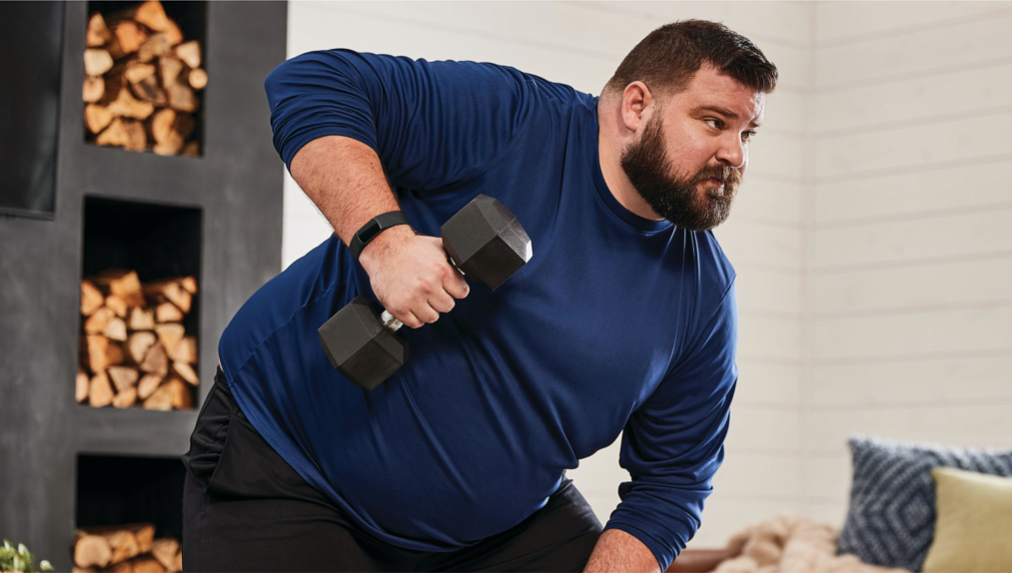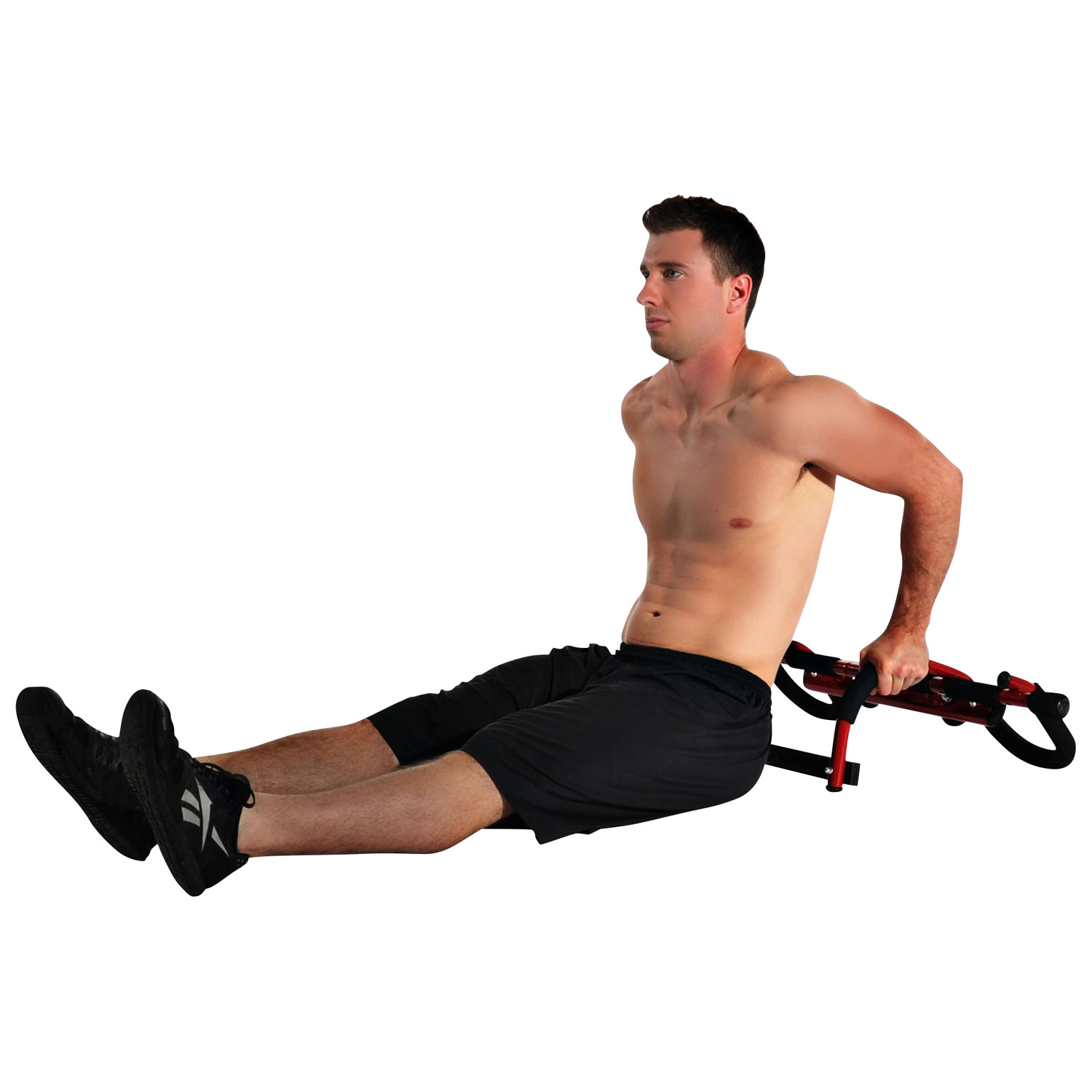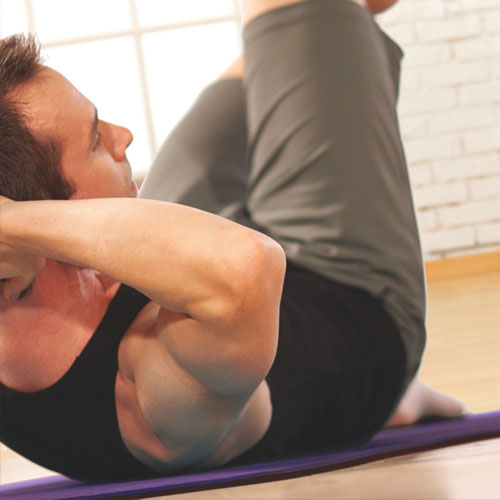
The most common reason people have difficulty keeping a consistent Health & Fitness routine is time. If that’s you, I have a solution. Reduce the friction to exercise by working out at home. That makes it easier—and more likely— you’ll build exercise into a habit.
To start, you’ll need fitness equipment. You also don’t need much space. A living room, extra room, or basement can all become a makeshift gym. The key is reducing friction. Less setup time increases adherence. Here are the five things you need to start working out at home.
Working out with Dumbells and Weights
We all need to incorporate Strenght Training into our exercise routine. Dumbbells or free weights at home offer a number of benefits for strength training and overall physical fitness. There are many exercises for dumbells. First, they target different muscle groups for a well-rounded strength training routine. Second, they are incredibly convenient. New adjustable dumbbells are adjustable to different weight levels ranging from 5lb up to 52.5lb. Most work with a dial system to adjust the weights. Moving the dial adds or subtracts plates. With just a pair of dumbbells, you have a gym worth of dumbbells.
Push-Up & Chin-Up Bars
Our own body weight can provide enough resistance for many types of home-based exercises. Many Push-Up & Chin Up Bars are designed for home use by mounting them to the top of a door frame. They typically come with mounting brackets for cement or wooden walls. A mounted chin-up bar provides users with many exercise options. They can grip the bar with their palms facing away from their body for a pull-up. Conversely, having the palms facing their body activates a chin up.
Door pull-up bars are a convenient and space-saving option for strength training at home. They allow users to perform upper body exercises without requiring a lot of equipment or floor space. It’s the ideal equipment for calisthenics training—a form of resistance training that uses your body weight and gravity to strengthen muscles and improve coordination.
Push-up bars—also known as push-up handles—are designed to help people perform push-ups. They feature two elevated hand grips mounted on a base. This provides a comfortable, stable surface, to push away from off the ground. The great thing about push-up bars is varying hand positions, and grip width. This helps target different muscle groups and provides users with a lot of variety. Push-up bars are good choices for people who have difficulty performing push-ups off the ground. They take up little space and work on any flat surface in the home. Use it in the garage or the bedroom, they make push-ups enjoyable.
Working out with Stability balls
Stability Balls known as exercise balls are large inflatable balls used for a variety of exercises. It helps improve strength, stability, and balance. The balls’ unstable surface requires users to naturally engage their core muscles to maintain balance. Stability balls provide a wide variety of exercises including squats crunches, push-ups, and lunges. They are relatively inexpensive and easily deflate for storage when not in use. Naturally, this makes it a popular choice for home gym setups. It’s important to choose the right size ball for your height and use proper form to avoid injury.
Yoga and Pilates
Yoga and Pilates is a great exercise activities to do at home. They both feature a variety of techniques designed to build strength and flexibility. Pilates is centered around core strength—abs, obliques, lower back, and hips. Yoga is great for improving flexibility. If you’re looking to perform yoga and pilates at home, there are several things to consider getting.
Pilates & Yoga Mats
Pilates & Yoga Mats are thin, lightweight mats made from a durable, non-slip material. They provide a comfortable and stable surface for exercising on the ground. Pilates mats tend to be thicker than yoga mats and include extra padding. This ensures better support for floor exercises involving pilates movements.
Yoga towels
Yoga Towels are another good option for home use. It’s a thin, lightweight towel used with a yoga mat. It’s typically made from a moisture-wicking fabric such as nylon or microfiber. Its purpose is to keep you dry and comfortable during yoga sessions. At home, it’s a great tool to absorb sweat and moisture. Additionally, it provides an additional layer of grip, particularly if you sweat a lot. Some people also use it as a replacement for their yoga mat or to cover a dirty or slippery mat. Yoga mats are smaller and lighter than regular towels and easy to wash and try. This makes it perfect for any home-based yoga session.
Pilates Reformers
If you’re building a dedicated home gym, consider Pilates Reformers. It’s exercise equipment used in Pilates workouts. It consists of a carriage, and a sliding platform mounted on a frame. A reformer allows a wide range of exercises that focus on core strength, flexibility, and alignment. Users use their own body weight and adjustable resistance from the reformer to perform exercises. They are typically used in conjunction with other equipment as part of a full-body workout.
Working out from home has time benefits
Working out consistently is a habit. Like most things, habits are formed. It takes time to build but there are things you can do to increase successful adaptation. The first is reducing friction. By working out at home, you don’t have to commute to the gym. There’s less friction to making exercise a daily habit. If possible, exercise first thing in the morning. Soon it will become a habit—just like brushing your teeth.
With the right gear—weights, pull-up bars, stability balls, and yoga mats—anyone can exercise at home. You don’t need to go to a gym to build muscle and strength. Make it a habit by investing time in yourself. Exercise should be a non-negotiable daily activity for all of us. When you’re ready to start working out at home, this Fitness equipment buying guide is a great place to start your Health & Fitness journey.







